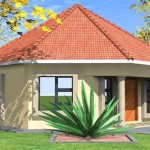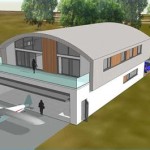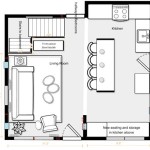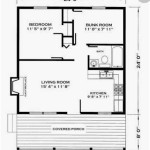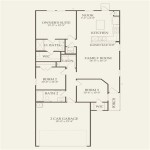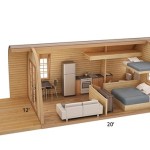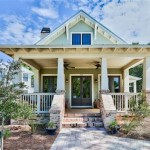Best Mountain House Plans: Designing Your Ideal Retreat
Mountain house plans represent a distinct category within architectural design, tailored to specific environmental demands and aesthetic sensibilities. Unlike standard residential designs, mountain house plans prioritize integration with the natural landscape, energy efficiency, and resilience against harsh weather conditions. Successful mountain house plans seamlessly blend functionality with visual harmony, creating a dwelling that serves as both a refuge and a showcase for the surrounding environment.
The selection of an appropriate mountain house plan requires careful consideration of several factors, including the specific location, the intended use of the property (primary residence, vacation home, rental property), and the lifestyle of the occupants. A well-chosen plan will maximize views, optimize natural light, minimize environmental impact, and provide a comfortable and secure living environment throughout the year. Ignoring these considerations can lead to costly modifications, compromised comfort, and ultimately, a less-than-satisfactory living experience.
Key Considerations for Selecting Mountain House Plans
The optimal mountain house plan is rarely a one-size-fits-all solution. The best plans are those customized, or at least heavily adapted, to suit the unique characteristics of the chosen building site. This involves a thorough assessment of several critical factors:
Site Orientation and Topography: The direction in which the house faces (orientation) and the shape of the land (topography) play crucial roles in determining the layout and design. South-facing orientations are often favored in colder climates to maximize solar gain during the winter months, reducing heating costs. However, in warmer mountain regions, east- or west-facing orientations might be preferable to avoid excessive afternoon heat. The terrain itself significantly impacts the foundation design and accessibility to the property. Steep slopes may necessitate specialized foundation systems, such as piers or stilts, while flatter areas may allow for traditional slab-on-grade construction.
The topography also dictates placement of windows and outdoor living spaces. A plan should take advantage of natural features like rock outcroppings and existing vegetation to create sheltered patios, panoramic views, and a sense of privacy. Ignoring the natural grade can lead to significant excavation costs and disrupt the surrounding ecosystem.
Climate and Weather Conditions: Mountain environments are known for their unpredictable and often harsh weather conditions. Heavy snowfall, strong winds, temperature extremes, and seasonal precipitation are all factors that must be addressed in the house plan. Steeply pitched roofs are often employed to shed snow effectively, preventing build-up that can damage the structure. High wind resistance is achieved through reinforced framing, impact-resistant windows, and properly fastened roofing materials. Insulation is crucial for maintaining a comfortable indoor temperature and reducing energy consumption, with a focus on high R-values for walls, roofs, and floors.
Furthermore, moisture management is critical in preventing rot and mold growth. Proper ventilation, moisture barriers, and durable siding materials are essential for protecting the structure from the elements. In areas prone to wildfires, fire-resistant materials for roofing, siding, and decks are highly recommended to enhance safety.
Local Building Codes and Regulations: Mountain communities often have specific building codes and regulations that differ from those in urban areas. These regulations may address issues such as maximum building height, setback requirements, environmental protection, and fire safety. It is crucial to thoroughly research and understand these requirements before selecting a house plan. Failure to comply with local codes can result in delays, fines, and even the demolition of non-compliant structures. Engaging with local building officials and experienced contractors early in the planning process can help ensure that the chosen plan meets all applicable requirements.
Essential Elements of Effective Mountain House Plans
Beyond the foundational considerations of site and climate, certain design elements are characteristic of successful mountain house plans. These elements contribute to the overall functionality, aesthetics, and livability of the dwelling.
Open Floor Plans and Expansive Windows: Open floor plans are commonly incorporated to maximize natural light and create a sense of spaciousness, particularly in smaller mountain homes. This design approach fosters social interaction and allows for flexible use of living spaces. Expansive windows, strategically placed to capture panoramic views, are another defining feature. These windows not only provide breathtaking vistas but also contribute to passive solar heating and natural ventilation.
However, careful consideration must be given to the energy efficiency of large windows. Low-E coatings, double or triple glazing, and insulated frames are essential for minimizing heat loss and gain. Overhangs and awnings can also be used to shade windows during the summer months, preventing overheating.
Use of Natural Materials: Mountain house plans often incorporate natural materials such as wood, stone, and timber to blend seamlessly with the surrounding environment. These materials not only enhance the aesthetic appeal but also provide durability and insulation. Exposed timber beams, stone fireplaces, and wood siding create a rustic and inviting atmosphere. Sourcing locally available materials can further reduce environmental impact and support the local economy.
Proper treatment and maintenance of natural materials are crucial for ensuring their longevity. Wood should be properly sealed and protected from moisture and insects. Stone should be properly installed and maintained to prevent cracking and weathering. Regular inspections and repairs can help extend the life of these materials and preserve their beauty.
Outdoor Living Spaces: Decks, porches, and patios are integral components of many mountain house plans, providing opportunities to enjoy the natural surroundings. These outdoor living spaces extend the usable living area and offer a seamless transition between indoors and outdoors. Covered porches provide shelter from sun and rain, while open decks offer unobstructed views. Fire pits and outdoor fireplaces create a cozy ambiance for evening gatherings.
The design of outdoor living spaces should consider the prevailing winds, sun exposure, and privacy needs. Windbreaks, shade structures, and strategically placed landscaping can enhance the comfort and usability of these spaces. Durable and weather-resistant materials, such as composite decking and natural stone paving, are recommended for outdoor surfaces.
Adapting Existing Plans and Working with Professionals
While numerous pre-designed mountain house plans are available, adapting an existing plan or working with an architect or designer is often necessary to create a truly personalized and functional home.
Modifying Stock Plans: Stock plans offer a cost-effective starting point, but they typically require modifications to accommodate specific site conditions, lifestyle preferences, and building codes. Adjustments to the floor plan, window placement, and material selections may be necessary to optimize the design for a particular location. Consulting with a qualified architect or designer can help ensure that these modifications are structurally sound and aesthetically pleasing. It's crucial to ascertain the plan's copyright status before making any alteration to avoid infringing on any intellectual property. Modifying a stock plan carries the risk of creating structural problems if not done correctly, so ensure the modifications are done by a qualified professional.
Engaging an Architect or Designer: Working with an architect or designer provides the opportunity to create a custom mountain house plan tailored to specific needs and preferences. Professionals can assist in all aspects of the design process, from site analysis and conceptual design to construction documentation and permitting. They can also provide valuable insights into sustainable design practices, energy efficiency, and material selections. Selecting an architect or designer with experience in mountain architecture is essential for ensuring a successful outcome. Their familiarity with the unique challenges and opportunities of mountain environments can result in a more functional, aesthetically pleasing, and environmentally responsible design.
The Importance of a Reputable Builder: The selection of a qualified and experienced builder is as important as the selection of the house plan. A reputable builder will have a proven track record of completing projects on time and within budget. They will also be familiar with local building codes and regulations and have established relationships with subcontractors and suppliers. Thoroughly vetting potential builders, checking references, and reviewing their past work is essential for ensuring a smooth and successful construction process. A quality builder will bring the architectural vision to life, ensuring the structural integrity and long-term durability of the mountain home.
Ultimately, the best mountain house plan is one that reflects the unique character of the site, the lifestyle of the occupants, and the specific demands of the mountain environment. Careful planning, attention to detail, and collaboration with experienced professionals are essential for creating a mountain retreat that will be enjoyed for generations to come.

Small Mountain House Plans Houseplans Blog Com
:max_bytes(150000):strip_icc()/whisper-creek-b65299d0def24eb28d88f38f7581e118.jpg?strip=all)
25 Best Mountain House Plans For Your Vacation Home

Dream Designs 657 Mountain House Plans

Mountain House Plans Homes For Your Getaway

Mountain House Plans Homes For Your Getaway

Mountain House Plans The Plan

Small Mountain House Plans Houseplans Blog Com

Mountain House Plans Homes For Your Getaway

Mountain House Plans The Plan

78 Mountain Rustic House Plans Ideas

